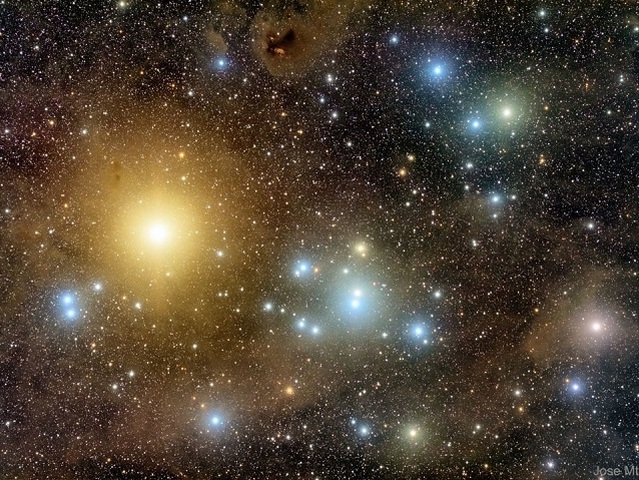A recent study suggests that the Hyades star cluster may contain the closest black holes to Earth

A new study suggests that there may be multiple black holes in the Hyades cluster, which is the closest open cluster to our solar system. This discovery marks the detection of the nearest black holes to Earth. The research was conducted by a group of scientists led by Stefano Torniamenti from the University of Padua, with significant contributions from Mark Gieles, ICREA professor at the Faculty of Physics, the Institute of Cosmos Sciences of the University of Barcelona (ICCUB), and the Institute of Space Studies of Catalonia (IEEC), and Friedrich Anders (ICCUB-IEEC).
Specifically, the finding took place during a research stay of the expert Stefano Torniamenti at the ICCUB, one of the research units that make up the IEEC.
Black holes in the Hyades star cluster?
Black holes have always been one of the most enigmatic and captivating phenomena in the Universe, enticing researchers from all corners of the world. The interest in black holes has particularly surged after their discovery through the detection of gravitational waves. Since the first gravitational waves were detected in 2015, experts have recorded numerous events that point to the mergers of low-mass black hole pairs.
The team of astrophysicists conducted a study using supercomputer simulations to track the motion and evolution of all the stars in the Hyades. This star cluster is located at a distance of about 45 parsecs or 150 light-years from the Sun. They used the simulations to replicate the current state of the stars in the cluster.
Loosely bound groups of hundreds of stars that share certain properties such as age and chemical characteristics are called open clusters. To validate simulation results, the positions and velocities of stars in the Hyades were compared with the actual data collected by the European Space Agency's (ESA) Gaia satellite.
"Our simulations can only simultaneously match the mass and size of the Hyades if some black holes are present at the center of the cluster today (or until recently)", says Stefano Torniamenti, a postdoctoral researcher at the University of Padua and first author of the paper.
The properties observed in the Hyades can be best replicated with supercomputer simulations that include two or three black holes at present. However, simulations that do not include any black holes, because they were all ejected within the last 150 million years (roughly the last quarter of the cluster's age), can still provide a good match. This is because the cluster's evolution could not erase the traces of its previous black hole population.
The new results indicate that the Hyades-born black holes are still inside the cluster, or very close to the cluster. This makes them the closest black holes to the Sun, much closer than the previous candidate (namely the black hole Gaia BH1, which is 480 parsecs from the Sun).
In recent years, the breakthrough of the Gaia space telescope has made it possible for the first time to study the position and velocity of open cluster stars in detail and to identify individual stars with confidence.
"This observation helps us understand how the presence of black holes affects the evolution of star clusters and how star clusters, in turn, contribute to gravitational wave sources", says Mark Gieles, a member of the UB Department of Quantum Physics and Astrophysics and host of the first author in Barcelona. "These results also give us insight into how these mysterious objects are distributed across the galaxy”.
The new study is the result of close collaboration between the University of Padova, ICUBB-IEEC, the University of Cambridge (United Kingdom), the European Southern Observatory (ESO), and the National Sun Yat-sen University (China).
The study of the Hyades star cluster has led to the discovery of the black holes closest to Earth so far. This remarkable discovery provides a great insight into the universe around us and has the potential to open up a new field of research, enabling us to explore the mysteries of these objects in greater detail. It also serves as an inspirational reminder that the universe is full of wonders and that we should never stop exploring and pushing the boundaries of our knowledge.

 How to resolve AdBlock issue?
How to resolve AdBlock issue?